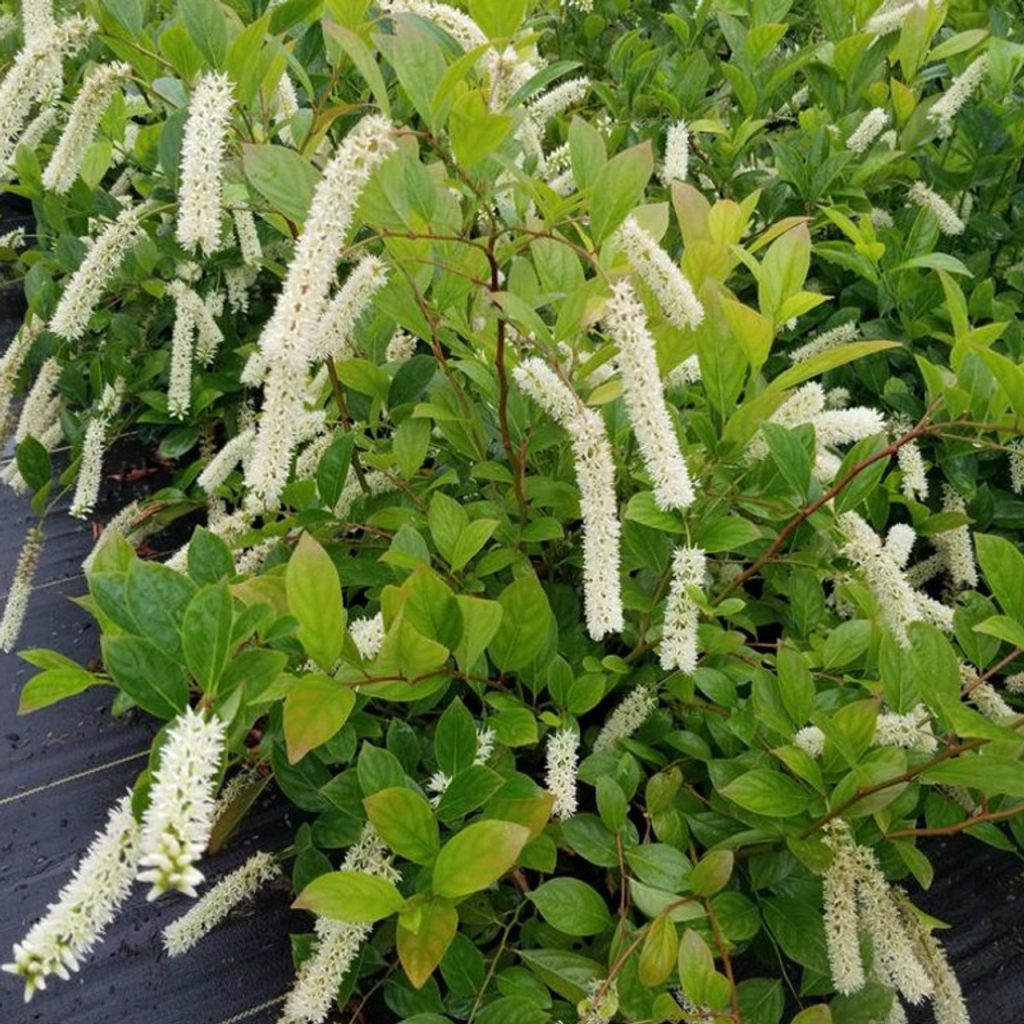Streambanks are vital to the health and ecological success of aquatic ecosystems. Erosion, pollution, and habitat loss threaten these fragile environments. Native plants can help protect and restore them. Here are five native plants that are particularly beneficial for streambank planting projects.
Swamp White Oak (Quercus bicolor)
Swamp white oak thrives in moist soil conditions. It’s an ideal choice for planting along streams and in wet sites. But its ability to grow in those anaerobic soil also makes it a great choice for urban sites. Growing up to 60 feet in height, this native provides excellent shade and wildlife cover. Additionally, its acorns serve as a food source for birds and small mammal species. Like all oaks, it attracts scores of insects critical for songbird nesting success. Its extensive root system helps prevent erosion and reduce sediment runoff.
Shop Swamp White Oak at Forrest Keeling
Virginia Sweetspire (Itea virginica)
Virginia Sweetspire is a versatile native shrub. It prefers moist environments, so it’s a good choice for streambanks and urban plantings. It tolerates inundation so it also works well in bioswales and rain gardens. Besides its aesthetic appeal, this shrub’s dense root system controls and limits erosion. It easily naturalizes by underground roots.
Its white flowers bloom during late spring and early summer. The flowers provide abundant nectar for pollinators like bees and butterflies.

Shop Virginia Sweetspire at Forrest Keeling
Buttonbush (Cephalanthus occidentalis)
Buttonbush is a hardy native shrub with a deep root system. Its roots help stabilize soil and combat erosion. Buttonbush is a great shrub for naturalizing in wet areas and attracting butterflies. It tolerates shallow standing water and adapts to a wide range of soils except dry ones. It has glossy green leaves and fragrant, round flower clusters during mid-summer. Native to the Midwest and eastern United States, it attracts more than 24 species of birds.
Shop Buttonbush at Forrest Keeling
Marsh Milkweed (Asclepias incarnata)
Marsh milkweed thrives in moist and part-shade areas. Like other native milkweeds, its vibrant flowers are magnets for pollinators. Milkweeds are important for all four stages of the monarch butterfly’s life cycle. Marsh Milkweed roots also helps improve water quality by filtering pollutants.
Shop Marsh Milkweed at Forrest Keeling
Blue False Indigo (Baptisia australis)
This bushy, robust native perennial is recognizable by its spring flowers. Flowers are blue-purple and pea-like, clustered in dense, upright, terminal spikes, four to16 inches long. The blue-green foliage provides a good backdrop to other flowering plants.
Blue false indigo provides several benefits to streambank ecosystems. The deep root system of blue false indigo helps stabilize soil and reduce erosion.
Easy-to-grow in any average soil, blue false indigo tolerates short-term flooding. Plants prefers full sun and are drought tolerant, but also do well in partial shade.
Blue false indigo attracts many pollinators and is a host plant for many butterflies. These include the Frosted Elfin, Wild Indigo Duskywing, and Hoary Edge butterflies.
Shop Blue False Indigo at Forrest Keeling
Start Your Streambank Planting Project at Forrest Keeling
Native plants help restore aquatic habitats and protect streambanks from erosion. They offer a variety of benefits that contribute to environmental well-being. Forrest Keeling grows the largest selection of native plants in North America. These native plants maximize the effectiveness of restoration and conservation projects. That’s why we operate with the goal of “restoring the Earth’s ecosystem… one tree at a time!”
Contact a Forrest Keeling representative today. Learn how we can assist you in finding the best native plants for your project.
